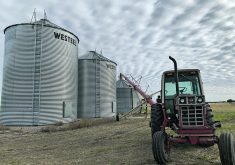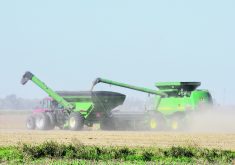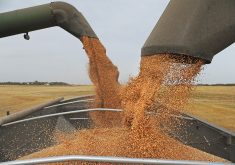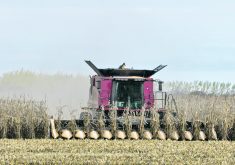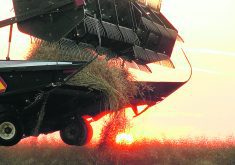Manitoba
SOUTHWEST
Precipitation varied from 10 to 80 millimetres. High winds were reported.
Harvest has begun for winter wheat and fall rye with average yield and good quality.
Fusarium and sclerotinia are visible in many crops.
NORTHWEST
Rainfall ranged from small amounts to 175 mm. Strong wind caused lodging.
Harvesting of winter cereals, fall rye, perennial ryegrass and barley is underway.
High humidity is increasing crop diseases, which includes aster yellows, oat blast, fusarium, white mould, powdery mildew and sclerotinia.
Read Also

Pakistan reopens its doors to Canadian canola
Pakistan reopens its doors to Canadian canola after a three-year hiatus.
CENTRAL
Precipitation varied from 15 to 50 mm. There were also high winds, including a tornado in the Baldur area, which caused substantial damage to infrastructure and sunflower crops.
Crops are in good to excellent condition, although yellowing and crop thinning are evident. Field access is an issue.
Nutritional value of late cut forages is lower, and fibre content is higher because of wet weather.
EASTERN
Rainfall varied from six to more than 50 mm. Lightning and high winds were reported.
Winter cereals are being harvested with yields from 50 to more than 80 bushels per acre.
Sixty percent of hayland is rated good to fair with the remaining in poor to very poor.
INTERLAKE
Rainfall amounts varied from five to 80 mm. Lodging in alfalfa seed fields also occurred.
Harvest is five percent complete with winter wheat yielding 60 to 70 bu. per acre. Forage grass seed has average yields and field peas yielded 40 to 50 bu.
Haying progress is stalled by rain and high humidity. Ensiling has been a good alternative.
Saskatchewan
SOUTHEAST
Harvest progressing with 82 percent of winter wheat, 53 percent of fall rye, 16 percent peas and two percent lentils in the bin.
Precipitation ranged up to 51 mm. Hail and high winds caused lodging.
Cropland, hayland and pasture topsoil moisture conditions have an average rating of 71 percent adequate.
SOUTHWEST
Rainfall generally ranged from 11 to 84 mm, and the Kyle area leads the province with 537 mm since April 1.
Eleven percent of the winter wheat, 14 percent of fall rye
and four percent of peas are combined, while canola is being swathed and pulses are being desiccated.
Three-quarters of the hay crop are baled or put into silage with quality rated as 57 percent good and 43 percent fair.
EAST-CENTRAL
Precipitation varied from two to 120 mm along with a tornado, which touched down in the Bethune area.
Harvest has started with 23 percent of winter wheat and 28 percent of fall rye in the bin along with eight percent of lentils and five percent of peas ready to straight cut.
Topsoil moisture conditions on cropland are rated 72 percent adequate and 28 percent surplus while hayland and pasture are 81 percent adequate and 19 percent adequate.
WEST-CENTRAL
Harvest progress includes 34 percent of fall rye, three percent winter wheat and one percent peas and lentils combined.
Precipitation was 20 to 112 mm with lodging and some disease.
Topsoil moisture conditions on cropland are rated 40 percent surplus and 60 percent adequate, while hayland and pasture are 18 percent surplus and 82 percent adequate.
NORTHEAST
Winter wheat is being combined, and four percent of peas are ready for straight cutting.
Rainfall ranged from four to 96 mm. Wind caused lodging.
Cropland topsoil moisture conditions are rated 35 percent surplus and 65 percent adequate, while hayland and pasture are 31 percent and 69 percent adequate.
NORTHWEST
Three-quarters of the hay crop has been baled and 12 percent cut with quality rated 33 percent good and 67 percent fair.
Precipitation amounts varied up to 46 mm, and crop damage was attributed to strong winds, lodging and diseases, particularly in peas.
Cropland topsoil moisture conditions are rated 80 percent adequate and 20 percent short.
Alberta
SOUTH
Four percent of crops are in the bin and about an equal amount are swathed.
Wet conditions slowed crop maturation and haying operations, however first-cut haying is almost complete.
Dryland and irrigated hay quality averaged 69 percent good to excellent, while pasture and tame hay growth conditions are 55 percent good to excellent.
CENTRAL
Most spring seeded cereals and oilseeds are filling in nicely, while pulses, particularly lentils, are deteriorating.
About six percent of winter wheat and nine percent of rye are combined or in the swath.
Quality of first-cut hay is poor due to wet conditions and rated at 48 percent good to excellent for dryland and 40 percent for irrigated, while pasture and tame hay average 77 percent good to excellent.
NORTHEAST
All crops are filling with some fields starting to ripen.
Rainfall has caused lodging in cereals and peas due to disease.
Three-quarters of first-cut haying is complete and quality is rated at 56 percent good to excellent. All pasture and tame hay conditions are good to excellent.
NORTHWEST
Peas are near harvest stage.
Lodging is an issue and wet conditions have slowed haying.
First-cut hay is 83 percent complete and quality is rated at 34 percent good to excellent. Pasture and tame hay average 83 percent good to excellent.
PEACE
Rain and light hail fell during the week, but crops have advanced well.
About two percent of peas and less then one percent of spring wheat and canola have been combined or swathed.
About 81 percent of first-cut haying is complete with quality rated at 60 percent good to excellent. Pasture and tame hay conditions average 80 percent good to excellent.



